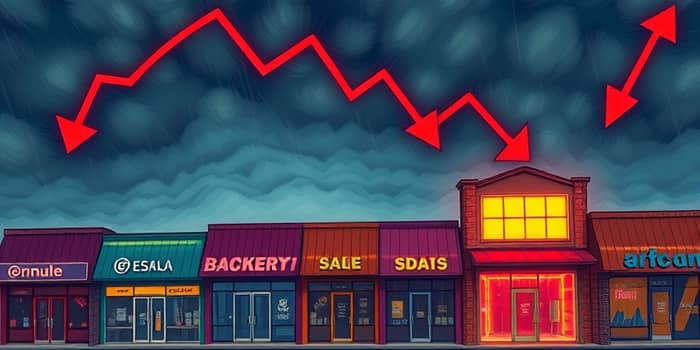
As the retail landscape evolves under mounting economic pressures, investors are closely watching short interest in lagging retail stocks. Spiking bets against vulnerable names reveal not only skepticism, but also opportunity for contrarian strategies. By understanding the data, risks, and underlying market dynamics, participants can navigate volatility with clearer insight.
Short interest measures the percentage of a company’s shares that investors have borrowed and sold, betting on a price decline. When short positions accumulate rapidly, it signals mounting stress on fundamentals or sentiment. Yet, surges in short interest can also trigger powerful rallies if a short squeeze materializes.
In Q2 2024, short interest across U.S. and Canadian markets climbed by nearly $58 billion, a 5.1% increase quarter-over-quarter. Though technology, communication services, and utilities saw the highest growth, retail names drew significant scrutiny. Volatile sales, margin pressures, and uneven e-commerce execution have heightened vulnerability in certain retail segments.
With U.S. retail sales projected at $7.4 trillion in 2025—yet growing just 0.4% year-over-year—headwinds persist. High operating costs, inventory build-ups, and cautious consumer spending weigh on companies missing digital and omnichannel benchmarks. Despite 7,000–8,000 store closures announced in 2024, national retail property vacancy rates remain low at 4–5%, underscoring a bifurcated landscape.
Neighborhood centers anchored by grocery tenants command rents of $25.3–$25.5 per square foot, reflecting investor preference for stable returns and consistent foot traffic. In contrast, discretionary and specialty retailers with declining same-store sales face intense scrutiny from short sellers.
Five Below (FIVE) exemplifies a heavily shorted retailer. As of April 2025, 8.63% of its float—4.63 million shares—was sold short. Although this represented a 22.45% decline month-over-month, it remains elevated relative to peers. A days-to-cover ratio of 1.9 suggests that under two trading days, short positions could be closed, amplifying liquidity risks.
Other small- and mid-cap retailers missing on inventory control or omnichannel integration also attract high short interest. Meme-driven volatility can exacerbate price swings, as retail and institutional traders pile in or out. Identifying names with weak digital adoption or poor earnings visibility becomes critical for risk management.
Algorithmic and quantitative trading now dominate intraday flows. Many strategies react to technical signals—momentum, volume spikes, or price breakouts—rather than fundamentals. In underperforming retail names, sharp price moves can trigger automated shorts or cover trades, compounding swings.
Meanwhile, the rise of retail trading since 2020 adds another layer of complexity. Social media chatter and online forums can propel heavily shorted names into sudden rallies. Investors must consider both institutional selling pressure and potential retail-driven squeezes when assessing risk.
High short interest often signals skepticism, but it also highlights potential catalysts. A positive earnings surprise, better-than-expected same-store sales, or a strategic partnership can spark a rapid squeeze. Conversely, ongoing margin erosion or weak traffic trends may confirm bearish bets.
Investors should build a disciplined framework when navigating underperforming retail stocks. Consider blending fundamental analysis—cash conversion cycles, inventory turnover, and foot traffic metrics—with technical indicators like moving averages and volume signals. Maintaining diversified exposure with risk controls can help mitigate the impact of unexpected squeezes or bearish cascades.
As the Federal Reserve contemplates rate cuts, financing conditions could ease for retailers carrying elevated debt loads. However, persistent inflation, supply chain disruptions, and shifting consumer preferences will continue to shape the retail battleground. Retailers excelling in omnichannel fulfillment, loyalty programs, and experiential offerings may outperform peers beset by structural challenges.
For short sellers, the focus will remain on names with fragile balance sheets and weak e-commerce platforms. Meanwhile, contrarian investors may find opportunities where bearish sentiment overshoots fundamental prospects. By staying attuned to both economic signals and market positioning, participants can craft strategies that harness volatility rather than fall victim to it.
In a market where sentiment can swing dramatically, short interest serves as both a warning light and a potential launchpad. Whether betting on further declines or gearing up for a squeeze, informed decision-making grounded in data and disciplined risk management will be paramount. The retail sector’s divergent paths—between necessity-driven anchors and discretionary laggards—offer a vivid illustration of how underperformance and resilience coexist in today’s markets.
References













